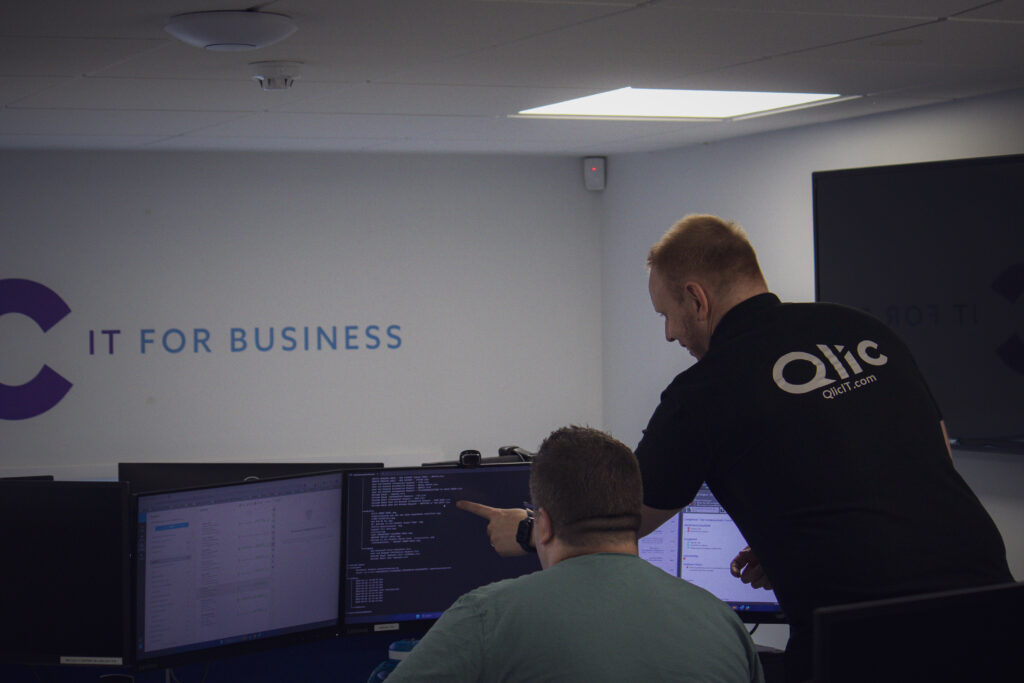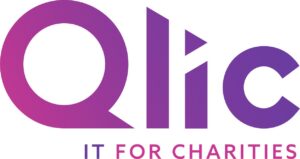
Mastering digital skills has transitioned from being a desirable asset to an indispensable necessity, especially with the latest technologies, such as AI chatbots and agents. AI for charities is a great opportunity for growth, and having a skilled and up-to-date workforce is essential to maximise its potential. This is why digital training in the charity sector plays a crucial role in empowering nonprofit organisations to not only navigate the complexities of modern technologies but also to amplify their impact.
According to the Charity Digital Skills Report 2024, growing staff and volunteer digital skills are a priority for 46% of charities. While 90% rate themselves as fair or excellent at basic digital skills, only 24% consider themselves excellent, a significant drop from 64% the previous year.
Technology has transformed how all organisations operate, including nonprofits, especially after the pandemic accelerated this trend. As digital tools become integral to daily life, nonprofits now rely on technology for various functions, from fundraising to donor data management.
Let’s take a look at charity digital training in more detail and why it matters.
Why Digital Training Matters for Nonprofits
The integration of digital charity training within nonprofit organisations brings a multitude of benefits, enhancing daily operations and strengthening their ability to serve communities. By equipping charity staff and volunteers with essential digital skills, organisations can improve efficiency, streamline administrative tasks, and enhance communication with donors and beneficiaries.
Digital training also enables nonprofits to leverage data-driven decision-making, making it easier to measure impact and optimise resources. Furthermore, as online fundraising and social media engagement become increasingly vital, well-trained staff can maximise these platforms to drive donations and awareness. In an era where cyber threats are on the rise, digital literacy also helps charities protect sensitive donor and organisational data. Ultimately, investing in digital training empowers nonprofits to adapt to technological advancements, future-proof their operations, and amplify their mission’s reach.
Here are the benefits of digital training for nonprofits
- Improved Operational Efficiency and Productivity
- Increase Donor and Volunteer Engagement
- Strengthening Data Security
- Improving Internal Communication and Collaboration
- Reduce Digital Exclusion
- Increasing Mission Impact in The Long Term
Improved Operational Efficiency and Productivity
Having digitally skilled employees is essential to the success of any organisation. Staff with the right digital expertise can make the most of a wide range of tools, from fundraising platforms to cloud-based platforms and be able to follow the best practices for nonprofit data management. These skills are vital for complex operations like donor relationship management and streamlining administrative tasks.
The right digital training enables employees to optimise processes, automate repetitive tasks, conduct research more efficiently, and analyse data more quickly. By embracing technology and ensuring that staff are proficient in its use, charities can eliminate redundancies, optimise workflows, and maximise their overall efficiency, allowing them to allocate more time and resources toward their mission.
Increase Donor and Volunteer Engagement
Great communication has never been more crucial, especially with the rise of social media, online fundraising platforms, and charity hybrid events. Nonprofits must harness the power of digital tools to enhance interactions with both donors and volunteers. Whether through Customer Relationship Management (CRM) systems, social media campaigns, or dedicated volunteer management software, digital proficiency enables charities to maintain and grow their support base, donors and employees’ engagement. Effective digital engagement strategies foster stronger relationships, boost donor retention, and encourage long-term volunteer commitment, ensuring sustained growth and impact.
Strengthening Data Security
Comprehensive digital training is essential to ensure that charity staff and the voluntary sector understand and adhere to crucial cybersecurity protocols. By following charity cyber security best practices, employees can play a pivotal role in safeguarding nonprofit data. Given the sensitivity of donor and beneficiary information, strong data protection guidelines for charities must be in place.
Training should provide hands-on instruction on effectively utilising security tools, recognising cyber threats such as phishing attempts, and creating secure passwords. With the right knowledge, charities can significantly reduce the risk of cyberattacks and ensure the confidentiality and integrity of their data.
Improving Internal Communication and Collaboration
Effective communication and seamless collaboration are crucial for nonprofit success. Digital training helps organisations harness modern tools to improve both internal and external communications. Online collaboration platforms, such as Microsoft Teams and Microsoft 365, support remote and hybrid work environments, making teamwork more efficient.
Training in nonprofit online collaboration best practices enables staff to leverage these tools for document sharing, project tracking, and real-time communication. By reducing miscommunication and fostering more effective teamwork, charities can enhance productivity and ensure that all stakeholders remain aligned with the organisation’s objectives.
Reduce Digital Exclusion
Ensuring digital skill training can help reduce digital exclusion in nonprofits and build a more inclusive organisational culture. Many charity staff and volunteers may not have had formal digital training, which can lead to disparities in technology use within the organisation. By prioritising digital literacy for all the team, nonprofits can create an environment where no one is left behind, ensuring that everyone can contribute effectively to the organisation’s mission.
Increasing Mission Impact in the Long Term
All the above benefits translate to long-term success in achieving a nonprofit’s mission. Digital transformation for charities, when combined with effective digital training, significantly enhances an organisation’s ability to drive impact. Digitally skilled employees can work faster and more efficiently, leveraging modern technology and AI tools to streamline processes. Increased productivity, facilitated by digital proficiency, frees up valuable resources that can be redirected toward the charity’s core mission.
Furthermore, the ability to harness modern tools for data analytics enables nonprofits to make more informed decisions, measure their impact, and continuously improve their strategies. In an increasingly digital world, investing in digital training is not just an option but a necessity for nonprofits looking to maximise their reach and effectiveness.

The Challenges of Charity Digital Training Implementation
While the implementation of digital training programs is crucial for voluntary sector organisations, it presents unique challenges that can hinder progress. According to the Charity Digital Skills Report 2024, skills gaps are the biggest barrier charities in the UK face, with 50% citing a lack of skills and expertise as a major issue. Additionally, 34% report a lack of training opportunities to upskill staff and volunteers.
Without digital skills, charities risk falling behind in an increasingly tech-driven world, limiting their ability to maximise fundraising, improve efficiency, and secure donor trust. Addressing these barriers requires a structured approach to digital training, but nonprofits often struggle due to financial constraints, lack of time, and limited technical expertise.
Here are some of the challenges your charity could face:
- Financial Constraints
- Lack of Time and Capacity
- Limited Technical Expertise
- Lack of Strategic Planning and Digital Transformation Strategy
Let’s explore how you can implement charity digital training successfully.
Financial Constraints
One of the biggest obstacles preventing charities from advancing their digital capabilities is financial limitations. Nonprofits often operate on tight budgets, making it difficult to allocate sufficient funds for technology upgrades, software licenses, and digital training programs. Securing funding that explicitly covers core digital costs remains a challenge, as many grants focus on project-specific funding rather than operational improvements.
Outsourcing digital training can also be expensive, further straining resources. However, nonprofits can explore opportunities such as Microsoft Grants for Nonprofits, which offer funding and software access to help charities enhance their digital capabilities. Finding cost-effective training solutions and IT support partners can also help mitigate financial challenges.
Lack of Time and Capacity
Many charities struggle with limited time and organisational capacity to prioritise digital skills development. Staff and volunteers are often stretched thin, focusing on immediate operational needs rather than long-term training initiatives. A lack of internal resources makes it difficult to dedicate time to learning new technologies or implementing training programs. Without a structured approach to digital training, many charities find themselves with outdated systems and inefficient processes, limiting their ability to grow and scale their impact.
Limited Technical Expertise
Many nonprofit organisations lack in-house technical expertise or dedicated staff members who can lead and support digital transformation efforts. Without internal IT specialists, charities often rely on ad hoc solutions or external consultants, which can be costly and unsustainable in the long term. Limited technical knowledge can also make it challenging to select the right digital tools, leading to inefficiencies and potential security risks. Investing in ongoing digital training ensures that staff and volunteers have the necessary skills to use technology effectively and securely.
Lack of Strategic Planning and Digital Transformation Strategy
Effective digital training requires careful planning and cannot be implemented quickly. A structured approach, including a well-defined digital transformation strategy, is essential for long-term success. However, many nonprofits lack dedicated digital guidance or consistent IT support, making it difficult to develop and execute a cohesive digital training plan. Working with the right IT support company can help charities build a sustainable digital training framework that aligns with their mission and operational goals.
How to Implement Charity Digital Training Successfully
With the rapid evolution of technology, charities are increasingly seeking ways to enhance their digital skills. In fact, 57% of charities plan to participate in external training, support, or informal opportunities to explore AI further this year. To ensure that digital training initiatives within nonprofit organisations are impactful and achieve their intended outcomes, charities should follow best practices for effective learning. Here are the main ways to implement your training:
- Define Clear Learning Objectives
- Customise Your Content
- Include Active Learning Techniques
- Multimedia Integration
- Consider Using Learning Management Systems
- Virtual Events and Webinars
- Favour Microlearning
Let’s delve into how you can implement charity digital training successfully.
Define Clear Learning Objectives
Establishing well-defined learning objectives is the foundation of any successful digital training program. These objectives should be specific, measurable, and directly aligned with the charity’s broader goals. For instance, if a nonprofit aims to improve donor engagement, its training program might focus on mastering Customer Relationship Management (CRM) tools or on creating social media campaigns. Transparent communication of these objectives to learners helps them understand the relevance of the training, keeping them motivated and engaged throughout the process.
Customise Your Content
Charities should tailor training programs to accommodate different skill levels, age groups, and specific roles within the organisation. Volunteers may need training on basic digital literacy, while fundraising teams might benefit from in-depth sessions on online fundraising platforms and donor analytics. Personalised learning paths ensure that participants receive the most relevant knowledge and skills, increasing overall engagement and retention.
Include Active Learning Techniques
Training programs should incorporate active learning techniques. Scenario-based exercises, case studies, and interactive simulations help learners apply concepts in real-world situations. For example, a cyber security training session could include a simulated phishing attack, teaching staff how to identify and respond to potential threats. Active learning ensures that knowledge is practically applied, improving long-term retention and problem-solving abilities.
Multimedia Integration
Using a variety of multimedia elements, such as videos, animations, podcasts, and quizzes can make digital training more engaging and accessible. Different learning styles, and incorporating multiple formats ensure that all participants can benefit. Additionally, multimedia-based learning can be more inclusive for individuals with disabilities or neurodivergent learners who may prefer visual, auditory, or interactive learning methods. This approach makes training more engaging while also fostering a more inclusive learning environment.
Consider Using Learning Management Systems
A Learning Management System (LMS) provides a structured, scalable way to deliver and track training. Platforms like Rippling, TalentLMS, and Moodle offer robust options, while free alternatives like OWL can be a cost-effective solution for smaller nonprofits. Additionally, charities can take advantage of resources like the Microsoft Office 365 Training Centre for Nonprofits, which provides valuable training materials on widely used digital tools. Implementing an LMS allows charities to centralise training, track progress, and ensure consistent learning experiences for all team members.
Virtual Events and Webinars
Virtual events, free courses and webinars provide a cost-efficient way to deliver training to a geographically dispersed audience. These formats allow for interactive sessions, including live Q&A opportunities, fostering engagement and addressing learner queries in real-time. Nonprofits can take advantage of free and recorded training sessions, such as those available in our webinar series, to ensure ongoing learning opportunities for staff and volunteers.
Favour Microlearning
Short and focused training modules (microlearning) are highly effective in improving engagement and retention. Breaking down content into bite-sized lessons allows participants to absorb information quickly and apply it immediately. This approach is particularly useful for busy charity staff and volunteers who may not have time for lengthy training courses. By delivering content in short form, nonprofits can ensure continuous learning without overwhelming their teams.
By following these best practices, charities can develop a strong digital training framework that empowers their teams, enhances efficiency, and maximises their overall impact.

Final Thoughts
Investing in digital training is not just about adopting new technologies, it’s about empowering nonprofit staff and volunteers to use these tools effectively to drive real operational improvements. From enhancing efficiency and donor engagement to strengthening data security and fostering better collaboration, digital skills are fundamental to a charity’s success.
However, implementing digital training comes with challenges, including financial constraints, limited technical expertise, and time restrictions. Despite these barriers, a strategic approach with clear learning objectives, customised content, active learning techniques, and the use of tools like Learning Management Systems and webinars can make digital training both accessible and effective.
By prioritising digital training and taking advantage of funding opportunities and structured learning strategies, nonprofits can future-proof their operations, improve service delivery, and ultimately maximise their impact on the communities they serve.
Get in Touch
Would your charity like to learn more about digital training and how we can help you? Get in touch with the team at Qlic here.






